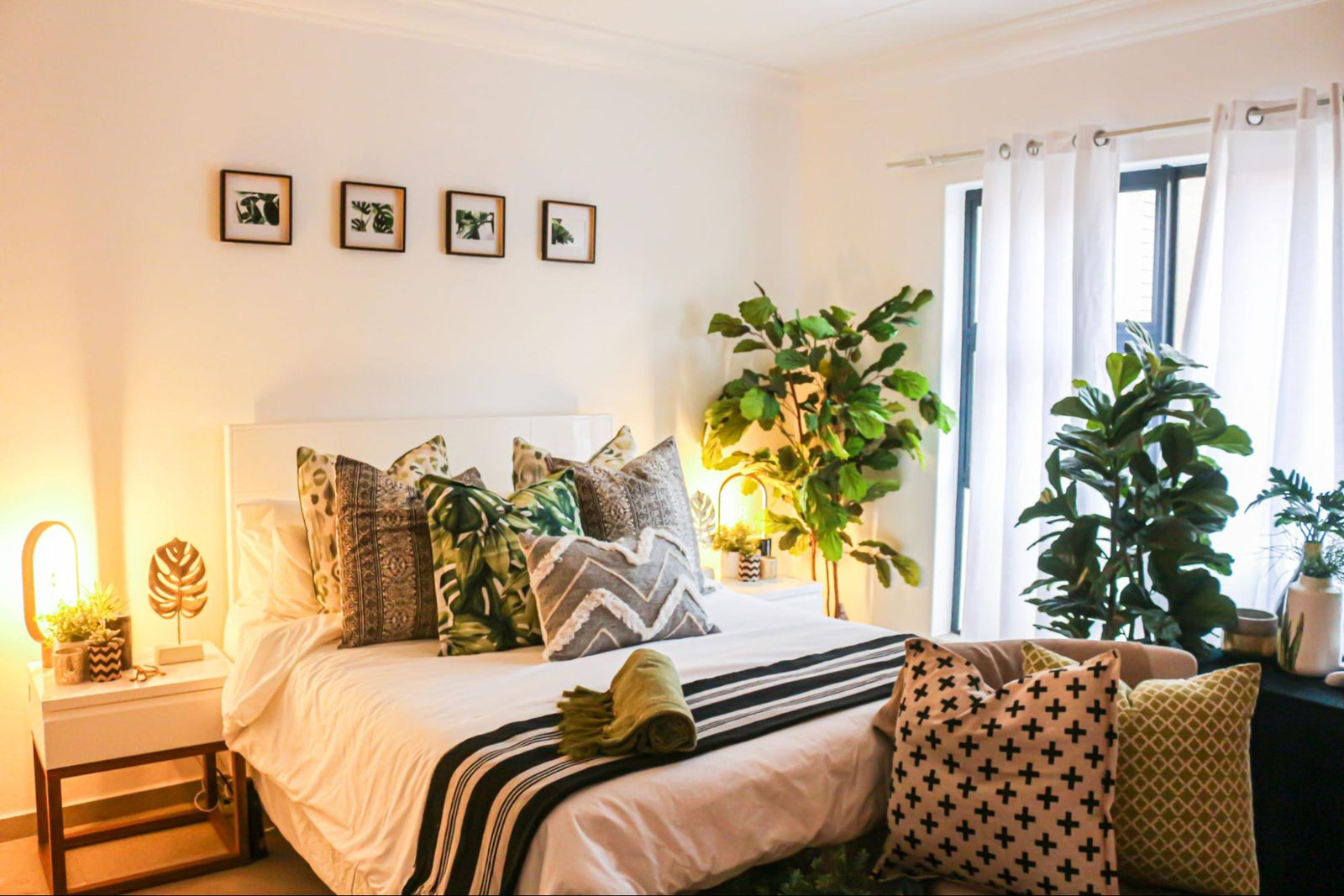The bedroom, our sanctuary for rest and relaxation, often lacks the vibrancy and freshness that plants can bring. Incorporating greenery into your bedroom not only enhances the aesthetic appeal but also improves air quality, contributing to a more restful sleep. Here's a guide to seamlessly integrate plants into your bedroom, creating a serene and healthful environment.
1. Choosing the Right Plants
Selecting the right plants is crucial. Opt for those that thrive in indoor conditions and require minimal sunlight. Here are three top choices:
- Snake Plant (Sansevieria): Known for its air-purifying qualities, it releases oxygen at night, promoting better sleep. Its upright, sword-like leaves make it a striking addition to any room.
- Peace Lily (Spathiphyllum): With its elegant white blooms and dark green leaves, it enhances air quality by filtering out harmful toxins like benzene and formaldehyde. It thrives in low light and has a forgiving nature, perfect for novice gardeners.
- Spider Plant (Chlorophytum comosum): Easy to care for, it's excellent at purifying the air of pollutants such as carbon monoxide and xylene. Its arching leaves and baby spiderettes add a playful touch to your bedroom decor.
2. Placement Matters
The placement of plants in your bedroom should be strategic. Consider these tips:
- Near the Window: For plants that require more light, place them near windows but avoid direct sunlight which can scorch their leaves.
- Bedside Table: Small plants like succulents or a small fern can create a calming atmosphere right next to your bed.
- Hanging Plants: Utilise vertical space with hanging plants like English Ivy, which has air-purifying properties.
3. Creating a Theme
Your bedroom's aesthetic can be enhanced by the type of plants and planters you choose. For a minimalist look, opt for white or neutral-toned pots. For a more bohemian vibe, try macramé plant hangers or terracotta pots.
4. Caring for Your Plants
Proper care is essential. Overwatering is a common mistake, so ensure the soil is dry before watering. Dust the leaves regularly to allow the plant to breathe and absorb light efficiently.
5. Health Benefits
Bringing plants into your bedroom isn't just about aesthetics; it's about health too. Plants can:
- Improve air quality by removing toxins and producing oxygen.
- Increase humidity, which can be beneficial for respiratory health.
- Reduce stress and anxiety, promoting a more restful sleep.
6. Safety First
If you have pets, ensure the plants you choose are non-toxic to them. Plants like Aloe Vera and certain types of Ivy can be harmful if ingested.
7. Integrating Plants with Bedroom Decor
When integrating plants into your bedroom, consider the overall decor. Plants can be used to complement the colour scheme or to add a contrasting pop of green. For a harmonious look, match the planters with your room's colour palette or choose contrasting colours for a more dynamic effect.
8. Seasonal Changes
Be mindful of the changing seasons. Some plants may require more light and water in the summer months and less in the winter. Adjust your plant care routine accordingly to ensure they thrive all year round.
9. Creating a Relaxing Atmosphere
The presence of plants can significantly enhance the relaxing atmosphere of your bedroom. Consider adding aromatic plants like lavender or jasmine, which are known for their calming and sleep-inducing properties.
10. Space-Saving Solutions
If you're short on space, consider compact plants or creative solutions like wall-mounted planters or shelves dedicated to small pots. This way, you can enjoy the benefits of plants without cluttering your bedroom.
11. The Joy of Plant Care
Caring for plants can be a therapeutic activity, helping you unwind and disconnect from the stresses of the day. The routine of watering, pruning, and caring for your plants can be a mindful practice that enhances your overall well-being.
12. Experiment and Personalise
Don't be afraid to experiment with different types of plants and arrangements. Your bedroom is a personal space, and the plants you choose should reflect your personality and style.
13. Educating Yourself on Plant Care
To ensure the longevity and health of your plants, educate yourself on their specific needs. Each plant has its unique requirements for sunlight, water, and soil type. Utilising resources like gardening books or online forums can be incredibly helpful.
14. Incorporating Technology
For the tech-savvy, there are apps available that can remind you when to water your plants or even monitor their health. This can be particularly useful for those who lead busy lives but still want to enjoy the benefits of indoor plants.
15. The Psychological Impact
Studies have shown that the presence of plants in living spaces can have a positive psychological impact. They can help reduce stress, improve mood, and even enhance cognitive function. This makes them not just a decorative addition, but a beneficial component of your overall mental health strategy.
Incorporating plants into your bedroom is more than a decorative change; it's a lifestyle choice that enhances your well-being. From the air-purifying Snake Plant to the stress-reducing Peace Lily, each plant brings its unique benefits. By following these tips, you can create a tranquil, healthy, and beautiful sleeping environment.
In need of a new bed? Check out our range of bed frames and mattresses at Divan Bed Warehouse.

